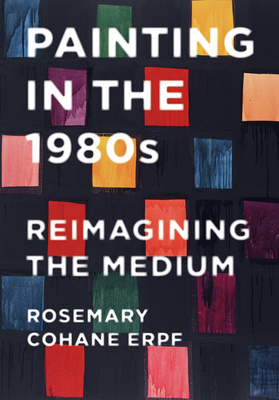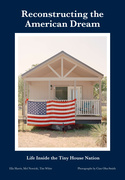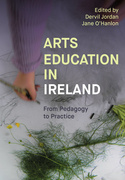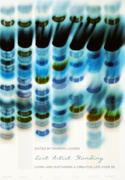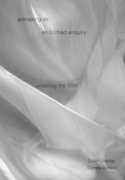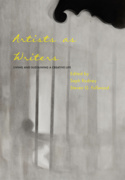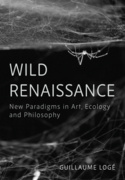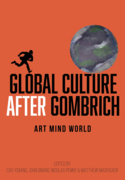Painting in the 1980s (Book)
Reimagining the Medium
Highly readable new book explores the re-emergence of the medium of painting with unprecedented force during the 1980s, despite suggestions that it was either dead or no longer relevant. Presents a wide variety of well known painters, discussing thematic similarities as well as unique and individualized practices. 120 colour illus.
City Lights with Lois Reitzes (WABE/NPR Podcast) interview with Rosemary Cohane Erpf
Edition
This book is the first to explore, in depth, major painters of the period and the factors that shaped their art. Accessible to both art novice and specialist, it is written in jargon-free, readable language, blending vignettes about the soaring art market of the eighties with illuminating interpretations of paintings by leading artists from around the world. Painting in the 1980s details where and how painting embodied the zeitgeist of the 1980s in original fusions of style and content.
Erpf knows each artist’s work well, and her discussions of the individual paintings are vivid and insightful. They bring the vitality of the art world in this understudied period to the fore. The individual descriptions and discussions of paintings are lively, engaging and provocative. They infuse each chapter with the author’s passion for the subject and carry the reader along. The thematics – painting as puzzle, German history, Italian place – hold each chapter together and set the foundation for the author’s original thinking and point of view.
This book explores painting by a broad swathe of artists who were at the heart of that painting resurgence. The many books that examine twentieth-century art tend to emphasize painting as part of European Modernism, American Abstract Expressionism, and Pop Art, with late twentieth-century painting often given short shrift. Excellent monographs and exhibition catalogues on individual artists exist, but Erpf’s intention is to counter the paucity of literature devoted to a larger group of painters. This is not a comprehensive look at all the artists who contributed to 1980s paintings revival.
Gallerists, curators and art historians assigned labels such as New Image Painting, Neo-Expressionism, Italian Transavanguardia, Neo-Geo and the blanket designation Postmodernism to categorize painting in this era. Yet these classifications denote a false sense of homogeneity, which will be made clear in this book. This book’s narrative aims to excavate and analyse the art and ideas that shaped each artist’s style and their diverse and often ambiguous content.
Works by the following artists are included: Nicolas Africano, Georg Baselitz, Jean-Michel Basquiat, Joseph Beuys, Francesco Clemente, Sandro Chia, George Condo, Enzo Cucchi, Marlene Dumas, Eric Fischl, Denise Green, Philip Guston, Peter Halley, Mary Heilmann, Neil Jenney, Donald Judd, Anselm Kiefer, Gordon Matta-Clark, Robert Moskowitz, Mimmo Paladino, A.R.Penck, Lari Pittman, Sigmar Polke, Gerhard Richter, Susan Rothenberg, David Salle, Julian Schnabel, Joel Shapiro, Frank Stella and David True.
The artists discussed are all well known, but the surprises are in the innovative ways the artists insisted on returning to painting in a decade when it had been pronounced dead. Their courage and creativity comes through in the text.
This will appeal to artists, art and cultural historians more broadly, and is suitable as a textbook for undergraduate and postgraduate courses in twentieth-century and contemporary art history.
Novice art historians, art enthusiasts and collectors will also find much to enjoy here – it has appeal well beyond simply those professionally involved in the art world.
Rosemary Cohane Erpf, Ph.D. is a teacher, gallerist, curator, and consultant in modern and contemporary art. She has been a professor of art history at The School of Visual Arts, NYC; Long Island University Brookville, NY; and Savannah College of Art & Design, Atlanta, GA.
Acknowledgments
Introduction
1. New Image Painting: A Prelude to the 1980s
2. Painting as Puzzle: The Downtown New York Art World of the 1980s
3. Abstraction: Ideas about the Thing and the Thing Itself
4. Addressing Germany’s Past: Painting in a Divided Nation
5. A Sense of Place: The Italian Transavanguardia
6. Worthy Misfits: Defying Categorization
Conclusion
Bibliography
Index
'The re-emergence of painting in the 1980s in Europe and the United States is as exciting as it is confusing. In her in-depth analysis, Rosemary Erpf counters the false sense of homogeneity and problematic art historical labels attached to painterly practices of that era. Bypassing academic theories, hers is a human and empathic approach towards individual artists at work in the studio. Combining knowledge and passion, her book shines a clarifying light on the last great reset in the history of painting.'
'As "indispensable" as Gerhard Richter described painting to life, this book brilliantly weaves together accounts of painting in its decade of resurgence. Featuring close analysis alongside interviews with key participants, the book makes for a crucial companion to understanding this vital period of art history.'
'Rosemary Erpf energetically and cogently takes on the chaotic, polymorphous art scene of the 1980s where localism collided with the first inklings of globalism. Focusing on the three arenas familiar to denizens of the decade—the United States, Germany and Italy—she examines how abstraction and figuration jostled one another for primacy. What we see in hindsight is the active interconnection between these stylistic approaches, the role of the legacies of the immediate pasts in those areas in shaping the work, and how the work of artists she considers propelled art to new horizons, albeit not according to usual art historical orthodoxies and definitions.
A distinctive aspect of this narrative, however, is Erpf’s focus on several women artists in these discourses—notably Mary Heilmann, Jennifer Bartlett, Susan Rothenberg and Marlene Dumas—whose presences in chronicles such as this, tend to be downplayed or marginalized despite the protean nature of the painterly enterprises.'
'During the tumultuous 1980s, nothing seemed more urgent inside the New York art world than the fate of painting, and many of the issues that burst into the open then are still important today. Unlike most overviews published at the time, Painting in the 1980s strikes a careful balance between the critical reception of the work and the artists’ own explanations for what they were doing. From Bad Painting to the Italian Transvangardia and beyond, Erpf pulls together over two dozen key painters of the period, introducing readers to a pre-global art milieu when ideas about image and surface were fervently debated, and painters were leading the way to a stylistic revolution.'

